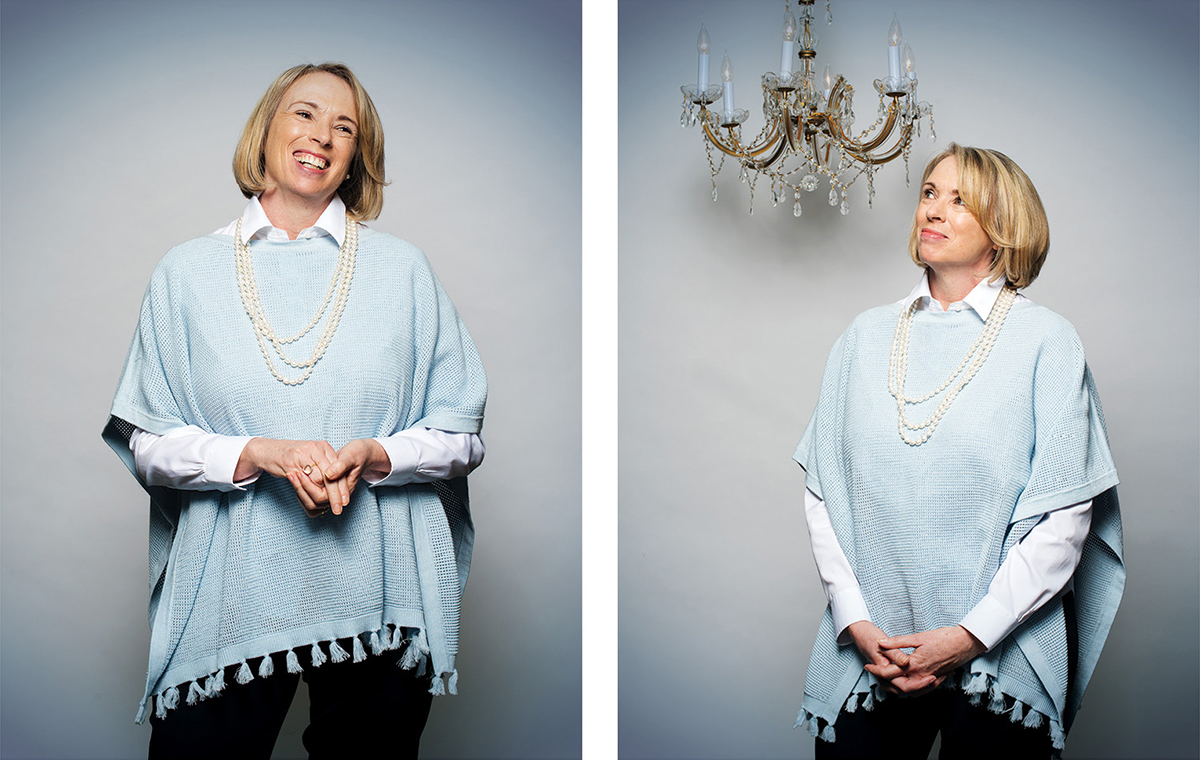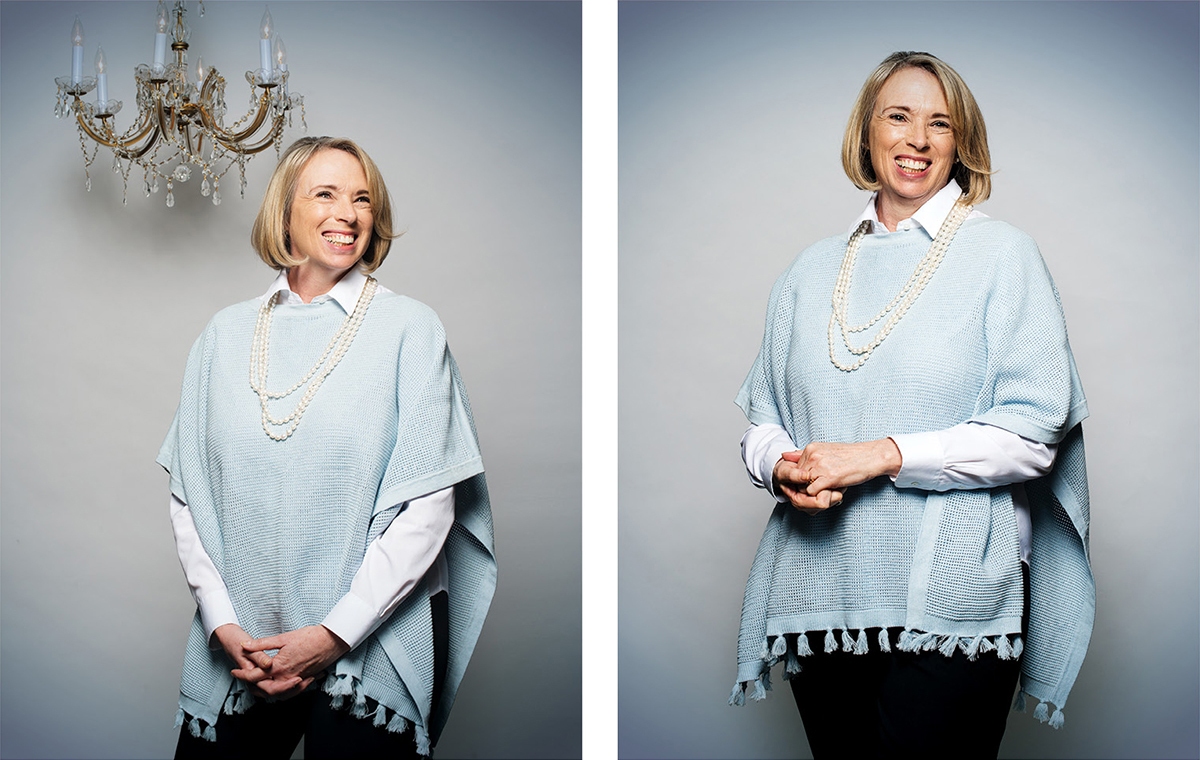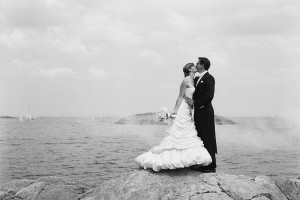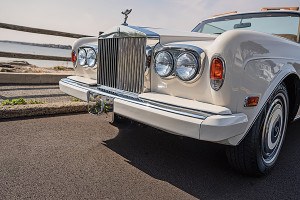The Illumination Aficionado: DesignLight’s Sandy Mulrey

Photographs by Toan Trinh, hair and makeup by Laura Dillon/Team
You’ve spent months selecting the perfect linens, flowers, and stationery for your big day. The biggest challenge ahead? Showing all of those details—not to mention you and your beloved—in the best light. Thankfully, that’s DesignLight’s specialty. Sandy Mulrey, the company’s director of sales and marketing, can combine uplighting, chandeliers, pin spots, and more to turn a boring old ballroom into a winter wonderland, or a plain white tent into a romantic dinner party. “If a couple come to me with a vision, we try to make it happen,” Mulrey says. “We strive to customize their look to achieve what they want to see on their wedding day and in their wedding pictures for years to come.”
How can lighting transform a room?
Lighting can take an empty space and make it beautiful. We can wash the walls in color, light the dance floors, and bounce light off the ceiling. We also do moving lights, fabric work, perimeter drapes, and perimeter uplighting. We offer different types of chandeliers, too: If your vision is elegant, we can bring in crystal chandeliers, or we can do something a little more rustic, like a twig chandelier. There are lots of different elements we can combine to create the right look.
When should brides- and grooms-to-be start thinking about lighting design?
The best time for a couple to come to me is right after they’ve chosen their venue, so that we can get an overview of the space and find out details like ceiling height, ceiling type, and room size. Some venues have really high ceilings and there is a lot we can do, and other venues have shorter ceilings, so you can’t drape as much. Some places have ceilings that are plaster, which means you can’t attach anything. We have to get creative at times. But we work with the couple once we know what a venue’s limitations are.
Which colors are most flattering for photos—and which should be avoided at all costs?
Amber looks great on the food and the flowers. It is just like a soft, gold summer sunset, and it looks wonderful with skin tones as well. If you choose amber lighting, your photographer will love you. We don’t do a lot of green lighting for weddings because green can be harsh on the skin tones, and we don’t use white. Red can be harsh as well, but if you’re having a red, black, and white wedding, go for it!
How can couples use lighting to create different moods throughout the night?
The guests are enjoying their evening; they are not looking at the lights specifically. The lights are just creating an emotion in the room. So you set the tone by starting with amber and then maybe once dinner is over, we change the color of the lighting. People might not notice that everything has changed, but they will get the sense that the room has taken on a whole new look. Later in the evening, you can go into an even deeper hue for a nighttime dance-party look—and punch it up a little bit with moving lights.

What does draping add to the equation?
If there’s a way to attach drapes to the ceiling, we can start in the center of the room and create a six- to eight-sided star pattern and have something really lovely overhead. We can mimic that drape with twinkle lights, which is very, very pretty. In a tent, we can go from the center out to the perimeter pole. It drops the ceiling down a little bit and softens it.
What are some budget-friendly ways to illuminate a space?
Think about your venue and how you might work with what is already there. Does the room have chandeliers that can be dimmed? That will help set the mood. Are there mirrors in the room? Some LED candles on pedestals at different heights would reflect nicely in the mirrors. Perimeter uplighting will always add to the warmth of a room, while being cost-effective. A patterned projection, like a leaf or a soft swirl, on a wall adds interest and usually doesn’t require technicians to be working in the ceiling. This will save on labor costs. Spend your money on things that will be at eye level or above.
How do you avoid blowing a fuse?
We know all of the amps required for all of the types of lights that we have, and we talk with each venue about their power resources and how it is divided between the caterer and the band or the DJ. If you are working in private homes, older venues, or historic buildings, these venues may not have high power capabilities. We always do a technical site visit to see what’s there and determine what outlets are connected to the same circuits. If needed, we bring in a generator.
What’s hot in lighting design right now?
A lot of people are putting floral material into chandeliers. It’s exciting to take a beautiful crystal chandelier and make it your own with some flowers that may blend with whatever is on your table and in your bouquet. Besides the flowers in the chandeliers, the bistro-light canopies are popular: the Edison-bulb look with a string of lights, which creates this more casual feel as it dances across the ceiling. It’s very pretty and very 2016.
85 County St., Dover, 508-785-1810, designlightco.com.
Tips
Sandy Mulrey pairs four classic wedding styles with the right lights.
Traditional: Uplighting adds dimension and drama to any ballroom. Make it your own by putting a pattern or wash on the dance floor.
Romantic: Create a dreamy ambiance with twinkle lights and fabric draping—just try to stay away from heavy colors.
Rustic: Dancing the night away in a barn? Try draping string lights from beam to beam for a homespun but sophisticated look.
Outdoor: Use natural elements to your advantage by hanging chandeliers, bistro lights, or twinkle light strings from tree branches. To give guests a sense of the venue’s breadth, light up the grounds’ periphery.
Getting married? Start and end your wedding planning journey with Boston Weddings' guide to the best wedding vendors in the city.


